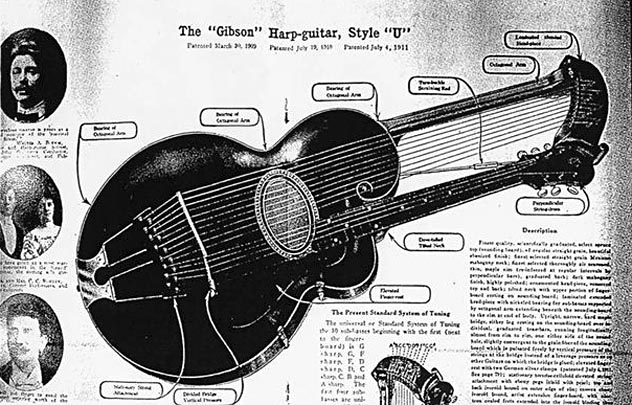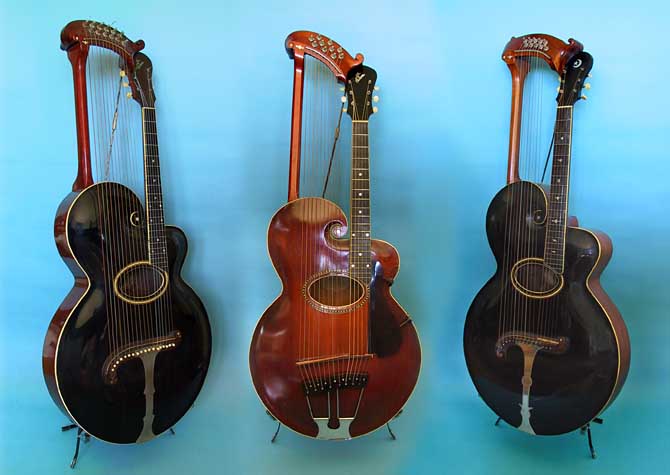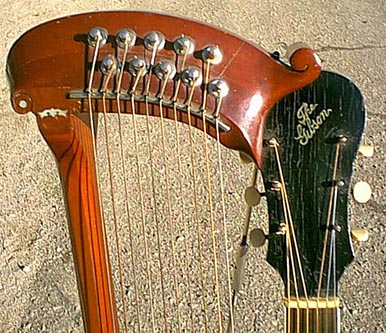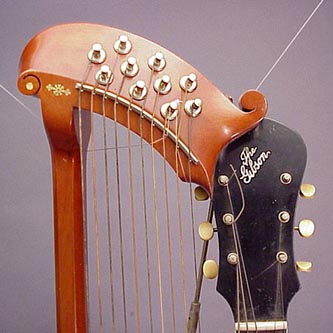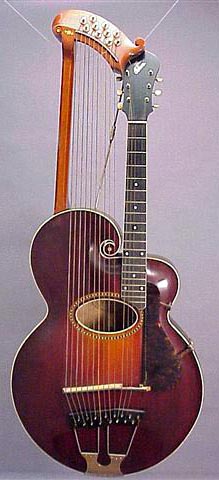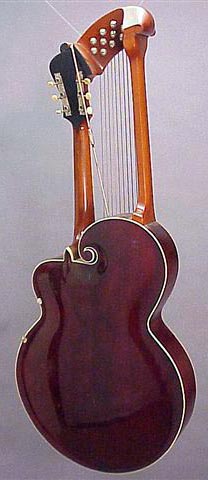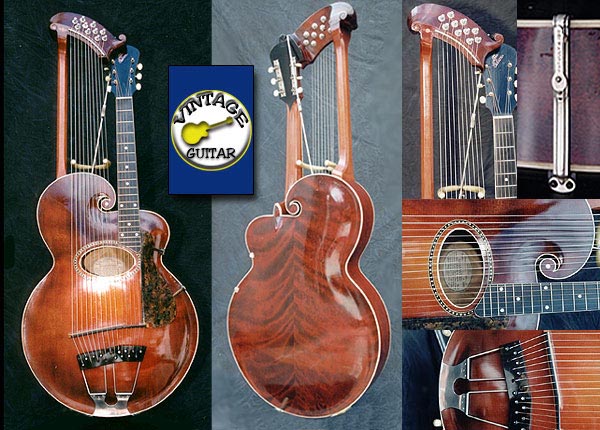|
After a few years of production the guitars of The
Gibson Company underwent a
big change in 1908. Some of the techniques from Orville were dropped to ease the
mass production. The harp guitars where changed and only the Style U survived.
The new harp guitar now had a floating bridge with a separate tailpiece. The
bridge was made of maple with an ebony top. The tailpiece consists of an acetate
(celluloid) piece with 2 “U” bars attached to a back plate screw to the central tail
block. The strings are held by short bridge pins. The scale was
standardized to 24 ¾ inches. The neck junction is more modern with a dovetail
cut on a flat part of the body. The wood for the back and the sides was changed to
Birch (though the catalog
stated maple again), but
the necks, blocks and reinforcements bars were still made of mahogany. The
harp’s headstock was angled a little more by making the top of the octagonal
arm a little bit longer. The carved top was softened and the soundhole ring
changed to the same design of the L4. A new logo was put on the headstock – an
angled “The Gibson” in a handwritten script. A pickguard was added at the
same time, held by two brackets on the side of the guitar. Tuners, finish and
inlays remain the same as the previous
These
photos show perfectly the transition between the two periods. Note the change in
inlays, color, neck joint, head position, logo, soundhole ring and bridge. (Photo by Gregg Miner)
On
these images you can see the difference in design: The logo, the position of the
sub-basses tuners, the top of the octagonal arm, the inlay and the head angle. (Photos from eBay and Frets.com)
The
new Style U harp guitar with the most common finish and appearance. The new neck
junction is visible. The back of the instrument is birch. (Photos from Frets.com)
A fantastic example of flamed birch back. You can also
see the brackets that hold the pickguard in place. (Photo from Vintage Guitar) Article by Benoît
Meulle-Stef with the help of: Mr Gruhn for original
catalogue material and help. Gregg Miner for help
with English, photos and formatting. |
